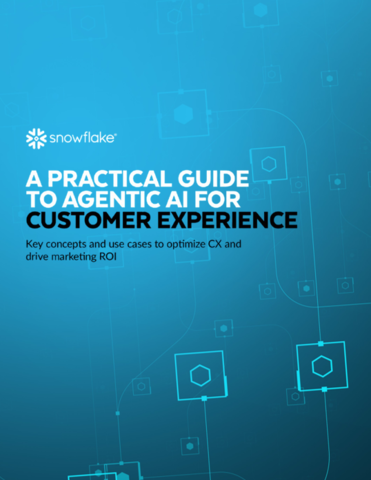AI and the future of identity management
Simon Gooch at Saviynt explores AI’s transformational impact on identity management

Artificial intelligence (AI) is forcing organisations to rethink traditional identity management. Identity has always been central to protecting systems and data, but AI is altering what an identity actually is. We are moving beyond the familiar world of employees and privileged users into one where automated processes, bots and AI agents hold access, make decisions and interact across networks.
Many organisations are adopting AI-powered capabilities at speed, still discovering what they can deliver, yet with every deployment, it also introduces something new to secure, increasing the identity security challenges.
This shift has moved identity out of the back office and into the centre of business operations, risk management and long-term planning. The difficulty is that most organisations still have to manage legacy systems, hybrid environments and thousands of human identities, while preparing for an AI-driven future, and not to mention current non-human identities. It is now crucial that identity security must not only protect AI agents, but also use AI itself if it is to keep pace with innovation.
With all this change, what we’re seeing is identity management shifting from compliance to security and now an essential requirement for business transformation and AI. Security and business leaders are working feverishly to manage and govern human, non-human and AI agent identities.
When identities multiply faster than people
The issue of non-human identities has been around for a while, and now outnumber human ones by a staggering margin. Gartner estimates that machine identities outnumber human identities by a ratio of 45 to 1 ratio, yet most organisations have very limited visibility or governance in place.
In the background, thousands of service accounts, API tokens and automation scripts are constantly accessing systems, moving data and carrying out tasks, often with no real oversight. These credentials rarely expire, are frequently overprivileged, and are rarely reviewed with the same level of scrutiny as human accounts.
The result is a growing attack surface where an overlooked machine identity can provide a persistent, unmonitored route into critical systems. Securing non-human identities is no longer a “nice to have”; it is now fundamental to any modern identity programme.
Adding AI agents to this takes the problem even further. They don’t just run fixed instructions, they learn, adapt and operate autonomously across infrastructure, applications and data. They make decisions, trigger additional actions and interact with both humans and other machines. Without a defined identity, there is no way to enforce least privilege, control entitlements or trace what an AI system has actually done.
Assigning identities to AI agents allows organisations to grant temporary, task-specific access and apply accountability in the same way they would with a human user. In short, if an AI system is capable of acting, it must also be governed.
Teams under pressure
Security teams are under immense pressure. Many are still struggling to keep up with basic access reviews and compliance checks that often rely heavily on manual effort. Visibility is often poor, identities are spread across multiple systems, cloud platforms and SaaS applications that don’t always talk to each other. The result is a disjointed picture where no one team can see the full scope of who or what has access to what.
At the same time, modern development practices such as DevOps and continuous deployment are generating new identities around the clock. Add AI transformation on top of that, and the number of identities, both human and non-human, increases dramatically, along with the privileges they hold. Without strong governance and automation, what starts as identity sprawl quickly becomes identity chaos, leaving gaps that attackers are only too ready to exploit.
Streamlining processes
Although AI is often seen as adding to the complexity of identity management, the technology also offers an opportunity to make processes far more efficient. Used well, AI can help remove much of the manual effort that leaves security and IT teams overstretched. One of the clearest examples of this is onboarding, an area that remains a major pain point for many organisations, particularly those operating across hybrid environments.
AI-driven identity platforms can automate key tasks such as provisioning and deprovisioning accounts, assigning privileges, enforcing policies and maintaining audit trails. This not only reduces configuration errors and the risk of abandoned accounts but also cuts the time needed to get new users, systems and even AI agents up and running securely.
By automating the routine but essential parts of identity management, teams can shift their focus from firefighting to strategic oversight, saving both time and cost while improving overall governance.
Securing the future of identity
Identity and AI are converging far more quickly than most organisations expect. What once felt like a distant consideration for future planning has already become a daily operational reality. Every new AI system or automation tool adds another layer of complexity, and without clear governance, that complexity soon turns into risk.
Organisations that act now to strengthen future identity management will not only be more secure but also more efficient and better positioned to take advantage of AI safely. This isn’t a challenge that can be solved by hiring more people or adding another layer of process. It demands smarter automation, cleaner data and a more strategic approach to identity ownership across the business.
In the end, success will depend on recognising identity as the connective tissue between people, technology and AI and building the trust and control needed to shape the future, rather than chase it.
Simon Gooch is Field CIO & SVP Expert Services at Saviynt
Main Image courtesy of iStockPhoto.com and D3Damon

Business Reporter Team
Most Viewed
Winston House, 3rd Floor, Units 306-309, 2-4 Dollis Park, London, N3 1HF
23-29 Hendon Lane, London, N3 1RT
020 8349 4363
© 2025, Lyonsdown Limited. Business Reporter® is a registered trademark of Lyonsdown Ltd. VAT registration number: 830519543





